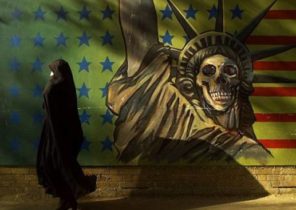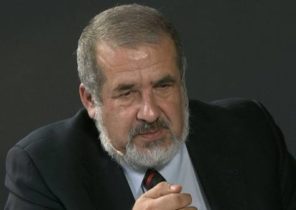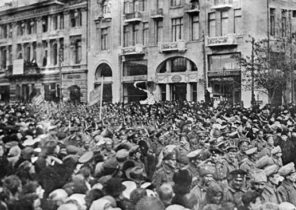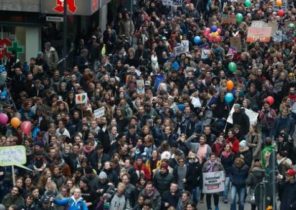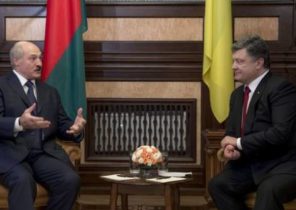
A small bus climbs through the narrow and winding road to Toribio (Toribío), and the window penetrates the pungent smell of marijuana. Plantings scattered along the mountainside, some even come close to the road. All lit countless lamps, accelerates the process of photosynthesis. The Indians living in the North of Cauca, grow this plant since time immemorial, however, the production of ordered and oriented mainly to external markets.
In this mountainous area, exhausted by years of war and neglect by the state, many began to consider growing marijuana as a way to escape poverty. However, this is an illegal method. Now, taking advantage of new legislation allowing the cultivation and sale of cannabis for medical purposes, 52 families of Indians, NASA, living in the North of Cauca, founded their cooperative Caucannabis. Together, they hope the strict and costly requirements of the Colombian legislation on the cultivation of marijuana. This project is only an example of the many economic initiatives that Indians NASA has developed for several years now.
Due to lack of investment, infrastructure and economic support, the Indians have relied on collective work, solidarity economy, based on the careful attitude to area of residence. They were supported by local governments and Indian councils. As a result of joining to the initiative of other cultural, medical and educational projects in this neglected state of the area, a whole network of agricultural and livestock cooperatives and associations.
“We said that if the government does not help us, then we need to find ways of survival in this area,” stated Ricardo Gambol (Ricardo Gembuel), the former mayor of Jambalo (Jambaló), municipal district, located in an hour drive on a dirt road by car from Toribio. Due to the fact that the government did not take any to ensure their rights to land in protected areas, with 70 years the Indians began to occupy the estates of the landowners and work together to handle their land. “Our share has fallen to gain a foothold in these lands and start from scratch. Thus was created the collective plots, where we carried out our collective and joint projects”, says the leader of the Indians.
Embroiled in a war
Apart from the lack of public investment and inequitable division of the land, an Indian settlement in the North of Cauca have become a major area of conflict tearing Colombia, since the 70-ies of the last century. It was there that the 6th Front of the rebel group the Revolutionary Armed forces of Colombia (FARC) daily waged an exhausting battle with government troops over the past two decades up until last summer did not announce a permanent cease-fire. Political and territorial rights of Colombian Indians was finally enshrined in the 1991 Constitution after the long years of struggle and seizure of their lands. And yet the world in Kahuku never came. With the escalation of the conflict on its territory, the NASA Indians have been drawn into a war between government and rebels.
Although some Indians and joined the ranks of the FARC, political organizations, and a large part of the population tried to stick to the neutral position. Due to the rampant violence in this area, Indian tribes responded by creating the Indian guard, consisting of men and women, armed only with wooden sticks. “In 2001, when paramilitaries are constantly committing murder, authorities urged some of us to create an Indian guard,” says Jose Alberto Camacho (Camacho José Albero), coordinator of the guard, representing the Indian settlement of the Northern part of the Cauca.
This led to considerable friction with the two armed parties, who are equally accused the Indians of NASA and the Indian guard in cooperation with the enemy, or paramilitary groups whose presence was not particularly noticeable either in Toribio nor Hambali. In 1996, Betancourt Marden (Marden Betancourt) was shot on the streets of Jambalo rebels from another group, the National Liberation Army. He was the first mayor elected by the Indian party but the rebels accused him of collaboration with paramilitaries.
In later times, when the President was Alvaro Uribe, the government tried to arm the Indians, so they opposed the FARC. After the deaths of several of them at the hands of the rebels, who in the military was much better prepared, regional Indian Council of Cauca (CRIC) was opposed to the government were arming the Indians of NASA. The official representative of the CRIC on the issue, currently the mayor of Toribio, Alcibiades, ESCWA (Alcibíades Escué), was then detained and accused of collaborating with paramilitaries, but in the end acquitted for lack of evidence.
“These days, CRIC had been preparing for the national March of the Indians”, says Alcibiades, Escue, who was elected mayor in 2015 from the Alternative Indian social movements. “Uribe’s government and the Prosecutor’s office ordered the arrest me because I thought that in this way will be able to prevent the March,” continues the mayor, referring to the procession of Indians in 2004 in protest against the free trade Agreement, the negotiations and the signing of which was conducted in the USA.
Solidarity economy
Exhausted by 50 years of war, this land became one of the places with the highest rates of poverty and inequality in the country, according to experts from the National statistical office (DANE). However, in parallel there began to arise numerous economic initiatives, which contributed to the peace talks and cessation of hostilities.
Indian councils, which since 1991 receive public funds as a stand-alone government Agency, funded and supported economic projects aimed at ensuring food autonomy of Indians in NASA.
In addition, all the initiatives correspond to the worldview of the Indians and are based on caring for the earth and nature. “The community decides in a meeting what kind of production to develop on its territory, to strengthen their own economy,” emphasizes, Kimba Vicente (Vicente Quimboa), Secretary of the city hall, Chambalo development. “A group of people render their projects to the General meeting that decides on granting them money,” adds Kimba.
Indian co-op in Cumbica, with 129 members, has become one of the most sustainable projects in the area. He has more than 50 years, the same as the conflict between the FARC and the government. It brings together seven co-operative enterprises, from gas stations to the Association of producers of agave. “We are not like other cooperatives that seek only profit,” says Luis Hernando (Luis Hernando), Secretary of the Board. “In accordance with our bylaws, 20% of our profit goes to funding educational centres of the Indian community”.
A few kilometers away, in the area of Loma Gorda a few Indian families have teamed up to create fish farms. “We started only a year ago. We drew attention to the fact that people in our area happy to eat trout, so I decided to create a fishery, see what happens,” says Julio Medina (Julio Medina), chair of the Association of the eight families who founded a fish farm. A few meters away erected a new factory building of dairy products, which jointly manage 60 families. The factory has its own cows that graze on the nearby meadows.
Funding is the main problem faced by such economic projects early in their implementation. Due to the lack of public resources, donations from NGOs and natural wit suggest the right solution. Indian revolving funds allow for the rotation of public funds in different families and thus save money. “Here [in Chambalo] several families is given in the use of various domestic animals for a period of five years, so they can get their profit and run their own production projects. Then the cattle are passed in using to other families for another five years”, says the Secretary of the city hall, Chambalo Vicente, Kimba.
But Toribio is one of the most successful Indian enterprises in the region plant on production of juice and mineral water in bottles Fxize that the language of the Indians, NASA means “cold”. He became the model of successful operation, including by improving the professional qualifications of managerial staff. Under the authority of the Indian councils, this company as one of the main conditions puts the use of raw materials from local producers. For the past five years as Artvin Pinilla (Pinilla Ardwin) returned to their homes in the North Cauca – from Bogota, where he studied. After receiving a diploma in the profession of managing companies, he now uses his knowledge to work at the plant for the production of juices and mineral water. “A few years ago began recruitment of qualified managers, and because of this, in recent years Fxize increased. Now it accounts for 80% of the market of soft drinks in the region,” explains Pinilla.
NASA and uncertainty
Cooperative projects in the economic field is not the only distinctive feature of Indian settlements in Cauca. Indian councils are also engaged in the management of health and education. “We aim not only every day to sit at the textbooks, but also to be in nature, to study our medicinal plants, how and when they should plant, when to harvest,” says Juan David Silva (Juan David Silva), the coordinator plans the organization of Indian life in Chambala. “We were told, when our land came Christopher Columbus who do not understand that, or about Simon Bolivar, but says nothing about the acts of our leaders, such as Juan Tama (Juan Tama),” says Silva, referring to the system of education, which also taught the native language of the Indians of NASA yuwe.
On the other hand, classic medicine — or Western, as it is called by the Indians combined with homeopathic remedies based on ancient recipes, and even spiritual healing which is carried out by elders. “When a person is sick, if the elders see that his illness is in need of a classical treatment, it is sent to the hospital, if the hospital no disease is not discovered, then have them do the elders,” explains Rafael Cuatia (Rafael Cuetia), former Indian Governor, Chambalo.
The life of the Indians of NASA stems in very poor conditions, in poverty, and sometimes accompanied by the fighting. And yet, solidarity and mutual assistance of the Indians helped to implement a number of projects on which they had pinned all their hopes on the world. “After the referendum we have at heart was very heavy sediment,” says Irne Konda (Irne Conda), who heads the Indian Council of Chambala. “But the community and the Indians have always shown perseverance. We are fighting for peace and will fight for it in the future.”

